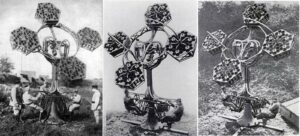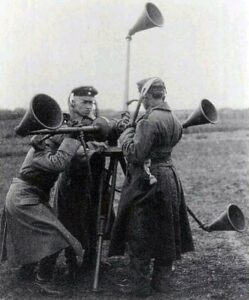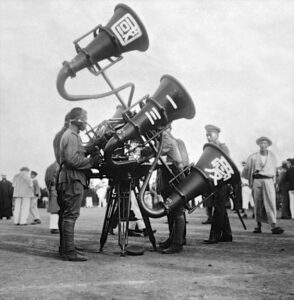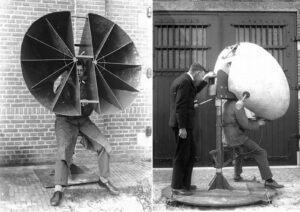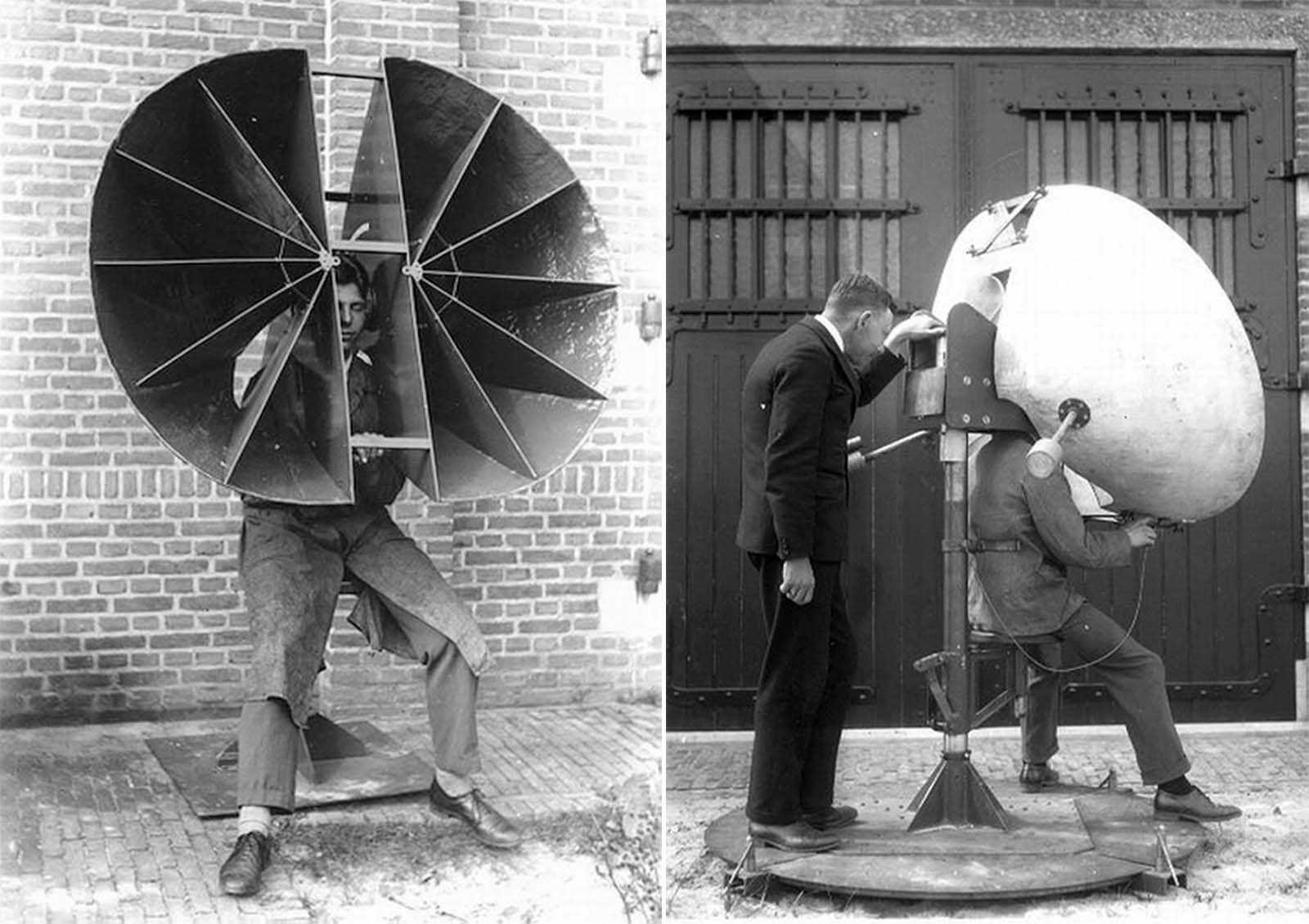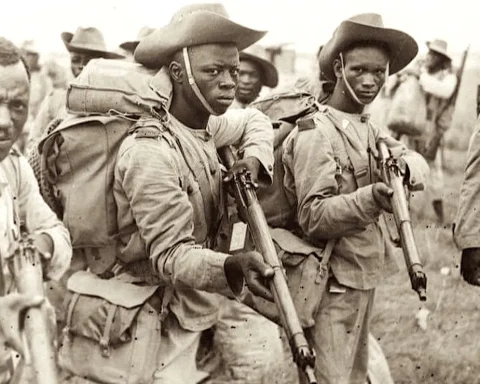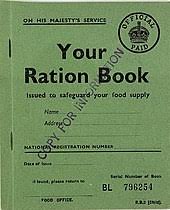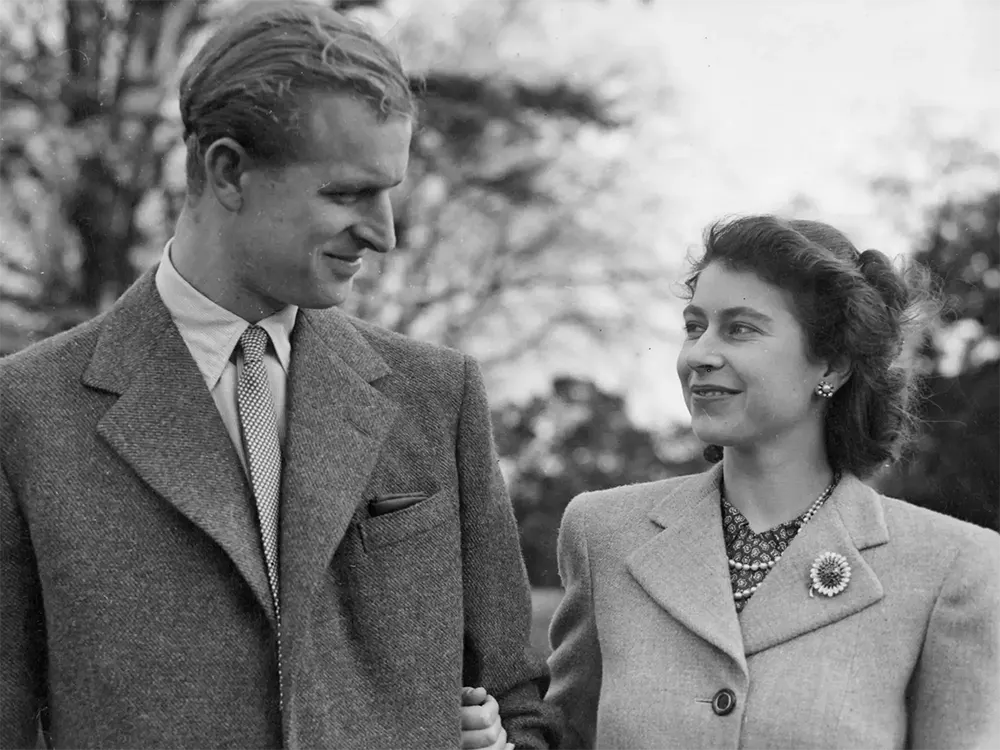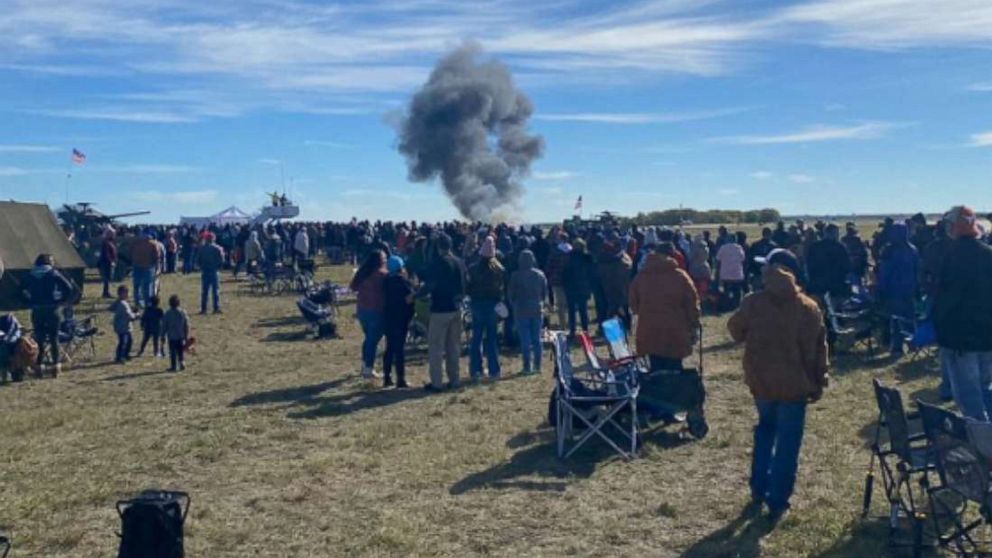During World War I and the beginning of World War II, radar hadn’t been invented, and the only way to detect incoming enemy planes was by listening with “sound locators.” France and Britain used this equipment that looked like musical instruments for the first time during World War I to know when German warplanes were close.
The sound locator, known as the acoustic locator, was two large horns or microphones connected to a tubing similar to the stethoscope and finally to the operators’ ears.
Several times, the equipment gave fairly accurate reports and enabled those operating them to detect warplanes and try to divert them. While there’s no proof that any hit occurred through this method, Wilson argues that it forced a Zeppelin to jettison its bombs on one occasion.
While Britain never publicly admitted to using radar till the war had gone on for a while, they considered radar a more credible option than acoustic locators. As a result of how suspicious the Germans were of the acoustic locators, they began to run the engines of their warplanes unsynchronised rather than synchronised, as was the norm to avoid detection. Radars helped with detection even then.
